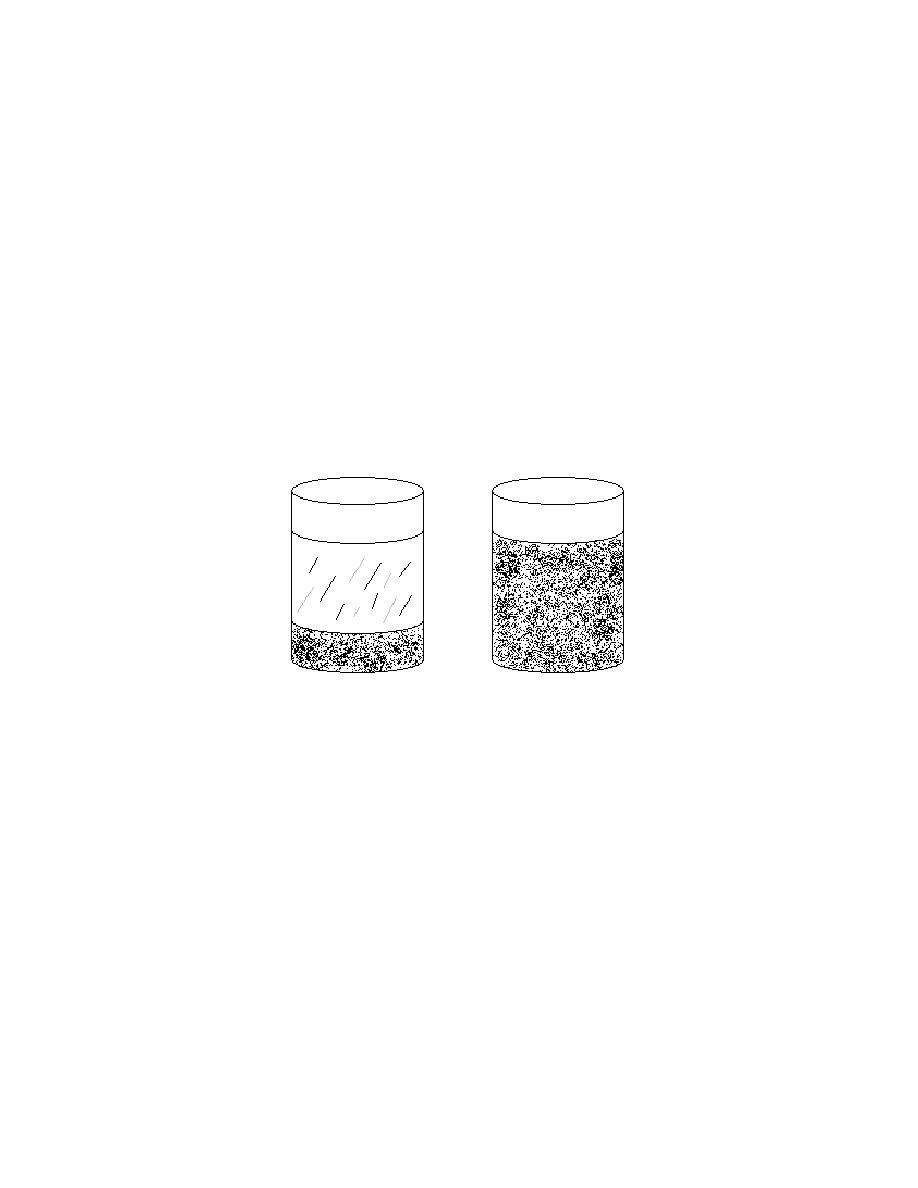
1-22. ALIMENTARY TRACT RADIOPAQUES
a. Barium Sulfate Radiopaques. Two typical contrast media used for
examining the alimentary tract are Barium Sulfate, U.S.P (United States
Pharmacopoeia) and Barosperse. Since they are based on barium sulfate, they form a
subgroup called barium sulfate preparations.
NOTE:
The United States Pharmacopoeia is a listing of the accepted standards for
compounding drugs.
(1) Both of the mixtures seen in figure 1-10 are barium preparation and
water. They were stirred at the same time and allowed to sit for ten minutes. Notice
that Barium Sulfate, U.S.P. settles out of suspension rapidly while Barosperse stays in
suspension longer. Barosperse is a barium sulfate derivative that is micronized and
ionized so that it stays in suspension longer. It should be noted that barium sulfate is
not water-soluble; when mixed with water, it is in suspension rather than in solution.
Barium Sulphate, U.S.P.
Barosperse
Figure 1-10. Comparison of Barium Sulphate, U.S.P., and Barosperse
after being stirred and resting a few minutes.
(2) Micronization is a process of grinding things to extremely small particle
size. Ionization is the application of like charges to all particles in an ionized medium.
Since like charges repel, the forces of repulsion hold the smaller particles in suspension
longer. A glass-stirring rod should be used to stir this preparation. Ionized media
should not be prepared with a mechanical mixer, metal spoon, or in a metal container
because metal provides a conducting pathway resulting in neutralization of the charged
particles. The repelling process of the particles is illustrated in figure 1-11.
MD0959
1-20


 Previous Page
Previous Page
